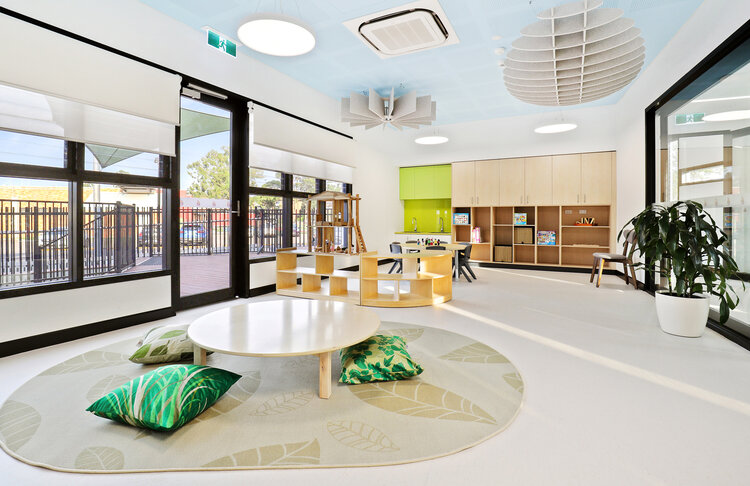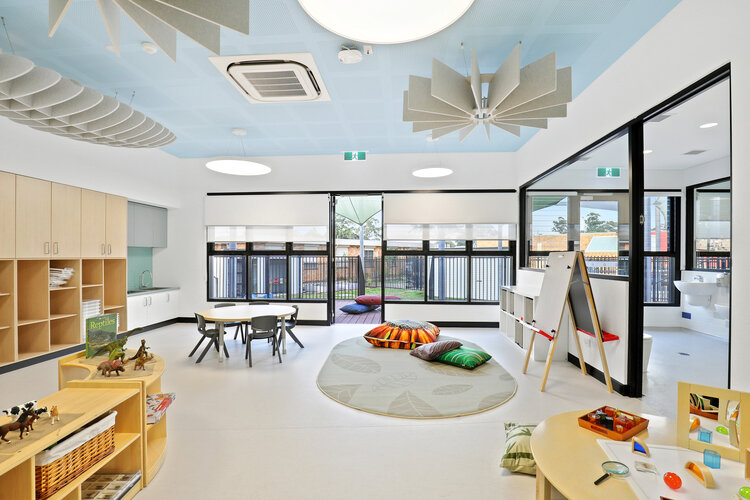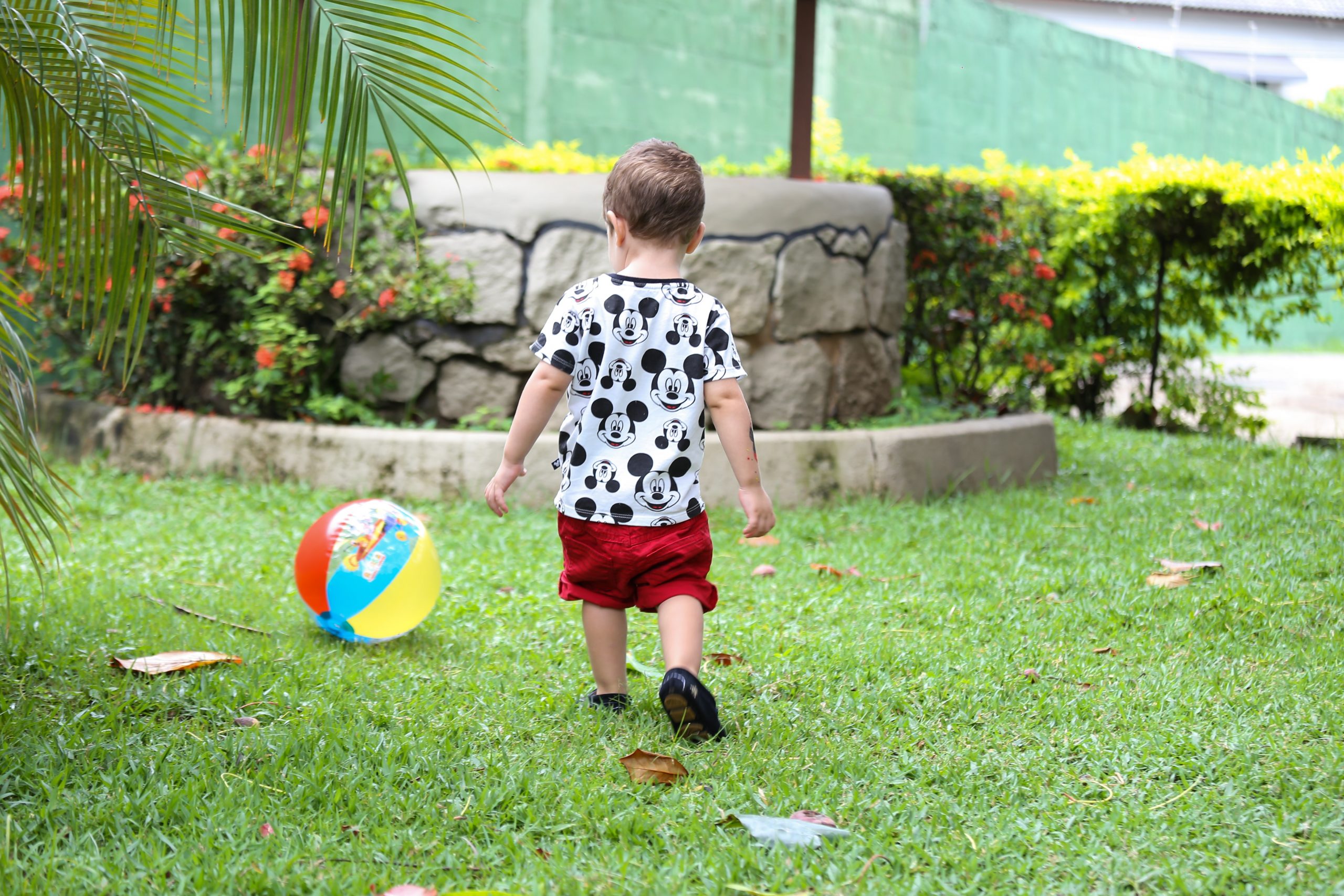Creating environments that enable children and educators to shine

In an increasingly crowded early childhood education and care (ECEC) environment, owners and operators are called on to continually reassess their offering, and create something which not only attracts and retains enrolments, but which also gives children and educators access to environments which inspire learning and reflect best practice.
Environmental aesthetics are crucial to the way that educators and children feel, think and behave. While many educators are familiar with the five elements of Maslow’s Hierarchy of Needs, the remaining three needs are not as well known. The sixth of Maslow’s eight needs is Aesthetic Needs.
Maslow describes aesthetic needs as those that are met by “finding appreciation and beauty within our environments,” leading to a higher sense of connection to “all things beautiful.”
Enter Jayne Harrison, principal and founder of multi-award-winning architectural design firm JDH Architects.
With 18 years of experience in innovative and creative architectural practice, JDH, and Jayne in particular, have drawn attention in the ECEC sector for their work on a number of education and community projects, showcasing not only a deep understanding of client needs, but also on the needs of the children and educators who use their spaces.
St Therese ELC
Informed by research, driven by curiosity, and powered by determination, the JDH team delivers robust, sustainable, cost-effective design solutions, such as the award winning St Therese Early Learning Centre, Sadlier, which was recognised by a judging panel for its role in supporting the environment as the third teacher, in line with the service’s Reggio Emilia approach.
In designing the space, which has a strong focus on natural light, visibility and transparency, to allow for a sense of the passage of time and connection to each other, the JDH team also drew on Gardner’s multiple intelligences theory.

Far more than just the space itself, JDH designed St Therese ELC to not only meet the specific pedagogical needs of the service, but also with the intention of growing discovery and delight in the children.
“When designing spaces for children and educators to flourish, it’s never just about the physical space. As we are bringing the concept together, those who will use it are at front of mind. What do they need from the space to grow and thrive? How does the light play off the walls? Where do the eyes rest? How does the sound carry? These are places of both learning and community, and the needs of the community are at the heart of our process,” Jayne explained.
Educator needs were paramount in the design of St Therese, with spaces carefully crafted to allow them to learn alongside the children. Specific areas were created so that educators can carefully listen, observe, and document children’s work and the growth of community in their classroom with the tools and special taxonomy to co-construct, and stimulate thinking, with both the teacher and child immersed in learning and play.
Reflecting on the process of designing the ELC in conjunction with JDH, Franceyn O’Connor, Manager Sydney Catholic Early Childhood Services said JDH showed “an outstanding ability to innovate” and demonstrated their extensive expertise in educational design.

“This is a facility designed to make a difference to the community it serves, and JDH have been relentless in their commitment to provide high-quality care and education for children. This building is an exemplary model for early learning now and into the future.”
A commitment to the ECEC community
JDH’s dedication to the early childhood community is not restricted exclusively to its client base. Determined to add value to the important work undertaken in ECEC, the JDH team has created an early learning design guide, which walks owners and operators through designing spaces for play, making existing spaces “more playable”, and managing key design, specification and maintenance issues.
“In everything we do, we seek to give value back to the broader education community, and our design guide is no different,” Jayne said.
Consolidating many years of experience, expertise and learning into a “one stop shop,” the design guide is an invaluable resource for those who are charged with investing in early learning, encouraging them to “take a step back from the sometimes-limiting stereotype of an early learning centre,” and embrace the possibilities that good design can offer.
The principles outlined in the guide are based on well researched findings about how children under five years of age learn, concentrating on Tactual and Kinaesthetic learning and spaces which encourage development of these skills.
Popular

Quality
Practice
Provider
Research
Workforce
Honouring the quiet magic of early childhood
2025-07-11 09:15:00
by Fiona Alston

Policy
Practice
Quality
Provider
Research
Safety starts with supervision: responding to real risks in ECEC
2025-07-07 10:30:58
by Fiona Alston

Practice
Provider
Quality
Research
Workforce
New activity booklet supports everyday conversations to keep children safe
2025-07-10 09:00:16
by Fiona Alston













